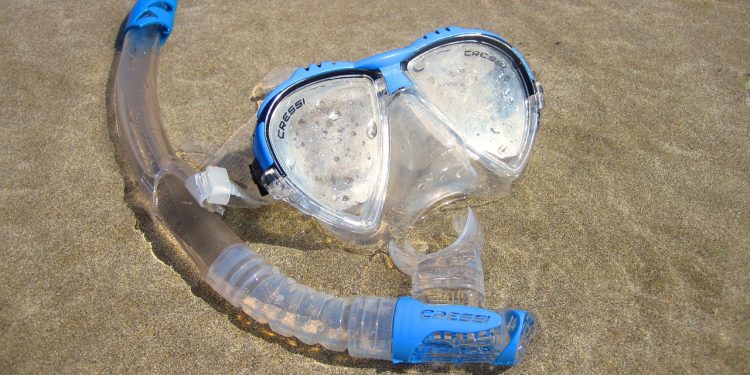Snorkeling offers a unique and breathtaking way to explore the underwater world, giving you a chance to see vibrant marine life up close while floating peacefully in the ocean. However, to get the most out of your snorkeling experience, it’s crucial to have the right gear. The right equipment can make the difference between a comfortable, enjoyable outing and a frustrating experience filled with leaks, fogged-up lenses, and sore jaws. Whether you’re planning a tropical vacation or just want to explore your local coast, here is a detailed guide to help you choose the best snorkel gear for your trip.
1. Choosing the Right Snorkel Mask
The snorkel mask is perhaps the most important piece of gear you need for snorkeling. It allows you to see underwater clearly and comfortably, while also keeping water out of your nose. Choosing the right mask is all about comfort and fit.
Fit is Key
A well-fitting mask is crucial to ensuring a leak-free experience. A good snorkel mask should create a perfect seal around your face without causing any discomfort. To find the right fit, hold the mask against your face without using the strap and inhale gently through your nose. If the mask stays in place and forms a seal, it is likely a good fit for you. Be sure there are no gaps, especially around the bridge of your nose or near your forehead.
Silicone Skirt
Look for a mask that has a high-quality silicone skirt. The skirt is the part of the mask that comes into contact with your face, and silicone provides a comfortable and secure fit. It’s also more durable compared to rubber, which tends to degrade over time. The silicone should be soft and flexible to provide the best comfort and to ensure that it molds snugly to the contours of your face.
Lens Options
Masks come with either single or double lenses. Single-lens masks offer a wider, uninterrupted view, while double-lens masks can fit different facial shapes more comfortably and can accommodate prescription lenses if needed. For those with vision needs, many manufacturers offer masks with corrective lenses, so you can enjoy the underwater sights without your glasses or contact lenses.
Also, look for tempered glass lenses, which are stronger and safer compared to regular glass or plastic. Tempered glass is designed to withstand pressure changes and won’t shatter easily, making it a safer option for snorkeling.
2. Finding the Perfect Snorkel
The snorkel itself is what allows you to breathe comfortably while face down in the water. Not all snorkels are created equal, and selecting the right one is key to enjoying your time in the water without hassle.
Types of Snorkels
There are three main types of snorkels: classic, semi-dry, and dry.
- Classic snorkels are simply a curved tube with a mouthpiece, making them lightweight and easy to use. However, they allow water to enter the tube if you submerge, meaning you will need to clear the water out yourself.
- Semi-dry snorkels have a splash guard at the top to prevent most of the water from entering the tube when waves splash over it. This makes it more comfortable than the classic style, especially if you’re snorkeling in choppy water.
- Dry snorkels are the most convenient type, as they feature a valve at the top that seals when submerged, preventing any water from entering the tube. This makes dry snorkels the best option for beginners or those who are less comfortable with the idea of clearing a flooded snorkel.
Purge Valve
Look for a snorkel with a purge valve, a one-way valve located near the mouthpiece. This valve allows you to easily clear any water that enters the snorkel by simply blowing out. It makes clearing your snorkel much easier compared to traditional models without a valve, reducing the amount of energy you need to expend during your adventure.
Comfortable Mouthpiece
The mouthpiece should be comfortable and easy to hold in your mouth for extended periods. It should fit comfortably between your teeth without causing jaw fatigue. Look for a snorkel with a replaceable silicone mouthpiece, as these are softer and more comfortable compared to the hard plastic options found on lower-quality snorkels.
3. Picking the Right Fins
Fins are essential for propulsion, making it easier to glide through the water with less effort. Choosing the right fins can make a huge difference in both your speed and comfort.
Full Foot vs. Open Heel
- Full foot fins cover your entire foot, like a slip-on shoe. They are typically more lightweight and are a good choice for warm water snorkeling. These fins are easy to use and generally more comfortable since they don’t require you to wear neoprene booties.
- Open heel fins have an adjustable strap at the back and are often used with neoprene booties. They tend to be bulkier and are usually intended for scuba diving or cold water snorkeling. Open heel fins provide a customizable fit and more versatility if you need extra protection for your feet.
Blade Length
Fins come in various blade lengths, and the one you choose depends on your preference and fitness level. Shorter blades are great for snorkeling as they offer better maneuverability and require less leg strength, making them ideal for beginners. Longer blades provide more propulsion, which means you can move faster with fewer kicks, but they require more strength and can be tiring over longer sessions.
Look for fins made from lightweight materials that have a good balance of flexibility and stiffness. Fins that are too stiff can cause leg cramps, especially for beginners, while fins that are too soft may not provide enough propulsion.
4. Full-Face Snorkel Masks
In recent years, full-face snorkel masks have become popular, offering a combined snorkel and mask experience. These masks cover your entire face, allowing you to breathe comfortably through your nose and mouth without needing a separate snorkel tube. They are a good choice for beginners or those who find traditional snorkels uncomfortable.
However, full-face masks come with some drawbacks. They are bulkier, which can make them harder to clear if water does enter, and they may also fog more easily. Additionally, some users report that it can be harder to equalize pressure when diving down. Always make sure to choose a high-quality, well-ventilated full-face mask, as cheaper versions may restrict airflow, posing a safety risk.
5. Accessories to Enhance Your Experience
In addition to the basic snorkel gear, there are several accessories that can make your snorkeling adventure even better.
Defog Spray
One of the most common issues with snorkeling is a foggy mask. A good defog spray can help you avoid this problem, giving you a clear view of the underwater world throughout your entire snorkel session. Alternatively, spitting into the mask and rinsing it out before wearing it can also help reduce fogging, but defog spray tends to work more effectively.
Snorkel Vest
If you’re not a strong swimmer or simply want extra buoyancy, a snorkel vest is a great accessory to consider. These inflatable vests provide additional buoyancy and can help you conserve energy, allowing you to stay in the water longer. They are also useful for beginners who may feel more comfortable with some added flotation support.
Mesh Gear Bag
A mesh gear bag is handy for keeping all your snorkeling gear together. The breathable material allows your gear to dry quickly, reducing odors and mildew buildup. It also makes it easier to carry your mask, fins, and snorkel to and from the beach.
Reef-Safe Sunscreen
Snorkeling often involves spending a lot of time in direct sunlight, and it’s important to protect your skin. Always opt for reef-safe sunscreen, which does not contain chemicals like oxybenzone and octinoxate that are harmful to coral reefs and marine life. Reef-safe sunscreens are mineral-based, offering effective protection without damaging the underwater environment.
6. Test Your Gear Before Your Trip
Once you’ve chosen your snorkel gear, it’s a good idea to test everything before heading out on your trip. Go to a local pool or shallow beach and try out your mask, snorkel, and fins to ensure everything fits comfortably and works as expected. This will allow you to make any adjustments before you’re out in the open ocean, and it will also help you become more familiar with the gear, giving you more confidence during your snorkeling adventure.
7. Renting vs. Buying Snorkel Gear
If you’re snorkeling for the first time or don’t plan on doing it frequently, renting gear can be a cost-effective option. However, rental gear is often of lower quality, and the fit may not be perfect, leading to potential issues with leaks or discomfort.
Buying your own gear is a better investment if you plan to snorkel more than once or twice. It allows you to find gear that fits well and meets your specific needs, which will make your experience much more enjoyable. Personal gear is also more hygienic and reliable compared to rentals that may have been used by countless people before you.
8. Caring for Your Snorkel Gear
Proper care of your snorkel gear will extend its life and ensure that it’s ready for your next adventure. After each use, rinse your mask, snorkel, and fins in fresh water to remove salt, sand, and other debris. Make sure to dry everything thoroughly before storing it, as excess moisture can lead to mold growth or deterioration over time.
Store your mask in a cool, dry place away from direct sunlight to prevent the silicone from breaking down. Keep your snorkel and fins in a similar environment, and avoid placing any heavy objects on top of them to prevent warping. With proper care, your snorkel gear will last for many years, providing countless hours of underwater exploration.
Ready for Your Underwater Adventure
Choosing the right snorkel gear is the first step to enjoying a safe, comfortable, and unforgettable snorkeling experience. By focusing on fit, comfort, and quality, you can ensure that you’re well-prepared to explore the wonders of the underwater world. Whether you’re snorkeling in the crystal-clear waters of the Caribbean, exploring coral reefs in Southeast Asia, or just enjoying a local beach, the right gear will help you make the most of your adventure and create memories that will last a lifetime.






